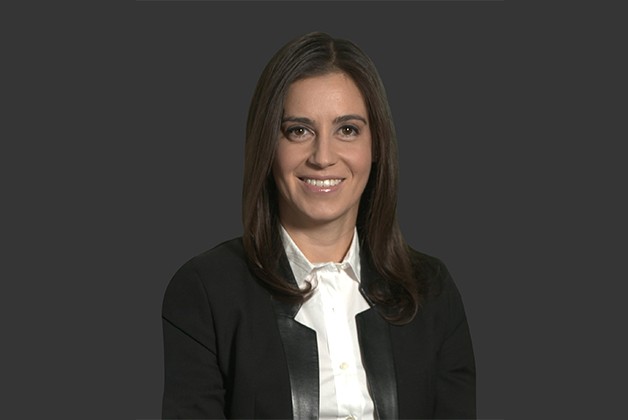DECEMBER 14, 2023
LISA LEWIN
Director, Prime Services
BNY Mellon | Pershing
The alternative investments industry continues to see positive momentum in the trend of including more women in senior leadership positions.
In the past year, the industry witnessed the launches of the two largest-ever women-led hedge funds (by AUM), and some prominent industry firms named women to C-suite level roles. In this year alone, Man Group announced a new female CEO and Bridgewater, the industry's largest hedge fund, announced a new female co-CIO.
Simultaneously, investors continue to value greater diversity in their roster of managers. Our Prime Services team recently surveyed investors to gauge their interest in women-led strategies. Among the respondents, 73% reported that women-led strategies were represented in their portfolios and 22% said they had increased the percentage of women-led strategies in their portfolios over the last five years.
Survey respondents also reported seeing increased demand and interest from their clients to include more women-led strategies in their overall allocation. The biggest challenge to doing this, they noted, has been the limited universe of women-led funds to date.
I recently spoke with several women leaders in the alternative investments industry to discuss this trend and learn about their strategies for cultivating, developing and including more women and women-led strategies in their firms’ offerings. Sharing their views were:
- “The Allocator” – Tetiana Kyslytsyna, Asset Manager, UBS Wealth Management
- “The Quant” – Michele Aghassi, Principal and Portfolio Manager, AQR Capital Management
- “The Portfolio Manager” – Dagney Maseda, Senior Portfolio Manager, SSI Investment Management.
Allocation and Risk
- Firm Ownership Matters, but Decision-Making Is About the Risk Takers — Assessing a firm’s ownership composition (e.g., 51% women) is important, but HFS also scrutinizes who is making the investment decisions. “When we looked at the number of female owners within the hedge fund space and compared that to the universe of female risk takers, we realized the latter is significantly larger, and thus may allow investors to achieve much greater impact if they were to include risk takers as opposed to just purely firm owners in their research,” Tetiana said.
- There’s No Gender-Linked Skill Difference, but Underrepresentation Persists – “There’s no data or any other evidence that would prove the existence of inherent differences in skill sets and capabilities between those offered by female and male portfolio managers. The data point that we do have is that there is a higher representation of female risk takers within the Equity Hedged funds compared to the other hedge fund strategies. It is important to support, train and promote an underrepresented part of the talent pool,” she said.
- Client Interest and Engagement Help to Maintain Momentum – “Something that brings me joy is when our clients ask, ’How are you engaging with your portfolio managers?’ and ’What does my portfolio look like in terms of male versus female and other forms of diversity?’” Tetiana said
Quantitative Scrutiny
- Fostering Community and Connectivity – AQR WIN (Women’s Initiative Network) supports and connects female professionals at all levels of the firm through learning and development opportunities and networking events. WIN has held panels on topics like decision making, influence and impact; hosted guest speakers such as Amherst professor Catherine Sanderson to discuss “The Science of Happiness”; and has recently introduced a WIN Ambassador Committee to engage more junior women at the firm. “WIN provides access to senior female role models and strives to develop programs that are of interest and importance to women across AQR,” said Michele.
- Attract College Students to Finance, Sustain the Support – AQR holds an early engagement summit for female college sophomores, featuring team members in various stages of their careers. The firm also sponsors internal programs for career development and hosts informal “connectivity lunches” as an opportunity to provide mentorship for women in early stages of their career. Said Michele, “It is a long arc. It takes time. But I’m very happy that over the last five years, we’ve more than doubled the number of women in senior roles at AQR.”
- Senior Management Participation and Engagement Are Key – “We began formalizing programs around diversity and inclusion around 2017. We’ve been very lucky to have the support of senior leadership. It’s so meaningful to see senior leaders and firm partners showing support and mentorship for all groups, including women,” Michele shared.
Manager Evolution
- Diversity, Equity, and Inclusion Topics More Broadly Considered – “We see equity-related topics being considered more often in the RFP process, not just involving women but diversity and inclusion in general. We’ve started to cover this topic in our marketing books, and the firm has become a signatory to the CFA’s DE&I Code,” Dagney said.
- Women’s Risk-Taking Builds Toward Ownership – Dagney believes that ownership follows risk taking: “As we get more female portfolio managers, and they launch more of their strategies, they are then given equity. But I think the risk taking must come before the equity ownership. This is not a five- or ten- year process. It’s a generational process that must move on and shift.”
- Recruiting Is Key; So Is Retention– “Talent retention and promotion are critical pieces of [advancing diversity]. Women make up about 40% of our staff, and about half of those are in leadership roles. I think we've done a pretty good job of promoting within,” said Dagney.
REFLECTING ON THE DISCUSSION
For investors, having a more diverse manager lineup fosters greater diversity in opinions and investment styles, which can ultimately help with overall returns. The three leaders highlighted in this article take slightly different approaches to advancing opportunities for women in the alternatives industry yet share a philosophical agreement on the importance of diversity and encouraging more women to have a seat at the table. They acknowledge that it will take time before “Women in Alts” becomes a mainstream concept but see the momentum building within their organizations and among investors, who are increasingly interested in access to more diverse managers and the benefits this diversity provides.
How can women-led hedge funds play a part in your investment program? Contact your relationship manager to discuss how to turn these insights into action.
Related Content
Ask how we can help transform your business








